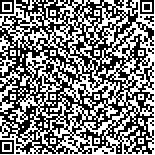辛榕,余贤娴,程斯曼,等.基于脑电微状态和表面肌电观察重复经颅磁刺激对脑卒中后右侧偏瘫患者上肢运动功能的影响[J].中华物理医学与康复杂志,2024,46(9):791-798
扫码阅读全文

|
| 基于脑电微状态和表面肌电观察重复经颅磁刺激对脑卒中后右侧偏瘫患者上肢运动功能的影响 |
|
| |
| DOI:10.3760/cma.j.issn.0254-1424.2024.09.005 |
| 中文关键词: 脑卒中 重复经颅磁刺激 上肢运动功能 脑电微状态 表面肌电 |
| 英文关键词: Stroke Transcranial magnetic stimulation Upper limb motor dysfunction Electroencephalographic microstates Surface electromyography |
| 基金项目:国家自然科学基金项目(U21A20479);深圳市科技研发项目(JCYJ20190809151007769) |
|
| 摘要点击次数: 3126 |
| 全文下载次数: 4110 |
| 中文摘要: |
| 目的 基于脑电微状态和表面肌电观察高频重复经颅磁刺激(rTMS)对脑卒中后右侧偏瘫患者上肢运动功能的影响。 方法 将脑卒中后右侧偏瘫患者40例按随机数字表分为高频rTMS组和假刺激组,每组患者20例。高频rTMS组和假刺激组均接受常规康复治疗,在此基础上,高频rTMS组增加rTMS治疗,假刺激组则接受假rTMS治疗。rTMS治疗每日刺激1次,每周治疗5 d,连续治疗2周。于治疗前和治疗2周后(治疗后)对2组患者分别进行上肢运动功能评估[Fugl-Meyer 上肢运动功能评定量表(FMA-UE)]、表面肌电(sEMG)检测和脑电微状态检测,同时记录2组患者治疗过程中的不良反应。 结果 治疗后,2组患者的FMA-UE量表评分较组内治疗前均显著提升,差异均有统计学意义(P<0.05),且高频rTMS组患者治疗后的FMA-UE量表评分亦显著高于假刺激组治疗后,差异有统计学意义(P<0.05)。治疗后,高频rTMS组桡侧腕长伸肌sEMG的峰-峰值为(7.55±3.73)mV,较组内治疗前和假刺激组治疗后均显著提高,差异均有统计学意义(P<0.05)。治疗后,高频rTMS组治疗后微状态B的时间覆盖率、微状态C的平均持续时间和时间覆盖率,以及微状态D治疗后的时间覆盖率和出现频率均显著优于组内治疗前和假刺激组治疗后,差异均有统计学意义(P<0.05)。脑电微状态A的平均持续时间与FMA-UE量表评分呈负相关(r=-0.568,P=0.027)。脑电微状态A的时间覆盖率与尺侧腕屈肌sEMG的峰-峰值呈正相关,脑电微状态B的平均持续时间与肱三头肌sEMG的峰-峰值和三角肌sEMG峰-峰值呈正相关,脑电微状态C的平均持续时间与三角肌sEMG的峰-峰值呈正相关。 结论 高频rTMS可有效地改善脑卒中后右侧偏瘫患者上肢运动功能,且经高频rTMS治疗后,脑卒中患者脑电微状态B相关的功能网络活动显著增加,而微状态C和微状态D相关的功能网络活动则显著减少。 |
| 英文摘要: |
| Objective To observe any effects of repetitive high-frequency transcranial magnetic stimulation (rTMS) on the upper limb motor function of stroke survivors with right hemiplegia. Methods Forty stroke survivors with right hemiplegia were divided at random into a high-frequency rTMS group and a sham stimulation group, each of 20. In addition to routine rehabilitation, the high-frequency rTMS group was given daily high-frequency rTMS 5d per week for 2 weeks, while the sham stimulation group was provided with sham rTMS. Before and after the treatment, both groups were evaluated using the Fugl-Meyer Upper Extremity motor function evaluation scale (FMA-UE), surface electromyography (sEMG), and electroencephalographic microstatus testing. Any adverse reactions in the course of the treatment were recorded. Results After the treatment, the average FMA-UE scores of both groups had improved significantly, with the average of the high-frequency rTMS group significantly higher than the other group′s average. After the treatment the peak-to-peak sEMG value of the radial long extensor carpi radialis longus muscle in the high-frequency rTMS group was significantly higher than before the treatment and significantly higher than that of the other group. The temporal coverage of microstate B, the average duration and temporal coverage of microstate C, and the temporal coverage and frequency of occurrence of microstate D after treatment of both groups were also significantly improved. The mean duration of electroencephalographic (EEG) microstate A was negatively correlated with the FMA-UE scale scores (r=-0.57) and its temporal coverage was positively correlated with the peak-to-peak sEMG value of the ulnar lateral wrist flexor. The mean duration of EEG microstate B was positively correlated with the peak-to-peak sEMG value of the triceps brachii and deltoid, and the mean duration of EEG microstate C was also positively correlated with the peak-to-peak sEMG value of the deltoid muscle. Conclusions High-frequency rTMS can effectively improve the upper limb motor functioning of stroke survivors with right hemiparesis. After high-frequency rTMS, the functional network activity related to EEG microstate B increases significantly, while that related to microstates C and D decreases significantly. |
|
查看全文
查看/发表评论 下载PDF阅读器 |
| 关闭 |